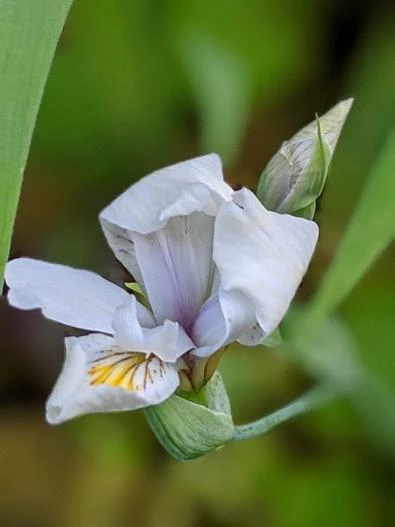Clackamas Iris
(Iris tenuis)
Clackamas Iris (Iris tenuis)
/
/

David Anderson
CC BY 4.0
Image By:
David Anderson
Recorded By:
Copyright:
CC BY 4.0
Copyright Notice:
Photo by: David Anderson | License Type: CC BY 4.0 | License URL: http://creativecommons.org/licenses/by/4.0/ | Occurence ID: https://www.gbif.org/occurrence/4936987785 | Publisher: Inaturalist |





Estimated Native Range
Climate Requirements for Haltom City, Texas
| This Plant | Your Site | Plant Suitability for Your Location | ||
|---|---|---|---|---|
| • Precipitation | 76" - 91" | 34" | Your precipitation may be insufficient for this plant. Irrigate N" / year. | Irrigate N" / year |
| • High Temp. | 73°F - 81°F | 97°F | Your summers may be too hot for this plant. | Too hot |
| • Low Temp. | 30°F - 34°F | 33°F | Your winter temperatures are normal for this plant | Excellent |
This plant should grow well at your location with about N inches per year (Y minutes per month) of irrigation.
Summary
Iris tenuis, commonly known as Clackamas iris, is a rhizomatous perennial herb native to the Pacific Northwest of the United States, specifically Oregon. It is found in moist meadows, grassy slopes, and open woodlands, often in areas with seasonal wetness. This species typically grows to 12-18 inches (30-45 cm) in height and features narrow, pale to dark green basal leaves that are deciduous. The Clackamas iris blooms from late spring to early summer, producing delicate flowers that range in color from white to pale blue or lilac, each with a distinctive yellow or golden, low dissected crest that adds to its ornamental value.
The Clackamas iris is appreciated for its graceful form and the subtle beauty of its flowers, which can add a touch of elegance to woodland gardens, borders, and naturalized areas. It is cold hardy and suitable for cultivation in USDA Zones 6 to 9. Gardeners value this species for its preference for humus-rich, well-drained soils and its tolerance for mildly acidic to neutral pH levels. While it can handle sun or partial shade, it does require some sunlight to produce flowers. The plant has average water needs, preferring consistent moisture during the growing season, but it is not tolerant of heat or dry conditions. When planting, space individuals 7–15 cm (3–6 in) apart to allow for proper growth and airflow, which can help prevent disease.CC BY-SA 4.0
The Clackamas iris is appreciated for its graceful form and the subtle beauty of its flowers, which can add a touch of elegance to woodland gardens, borders, and naturalized areas. It is cold hardy and suitable for cultivation in USDA Zones 6 to 9. Gardeners value this species for its preference for humus-rich, well-drained soils and its tolerance for mildly acidic to neutral pH levels. While it can handle sun or partial shade, it does require some sunlight to produce flowers. The plant has average water needs, preferring consistent moisture during the growing season, but it is not tolerant of heat or dry conditions. When planting, space individuals 7–15 cm (3–6 in) apart to allow for proper growth and airflow, which can help prevent disease.CC BY-SA 4.0
Plant Description
- Plant Type: Herb
- Height: 1-1.2 feet
- Width: 0.417-0.5 feet
- Growth Rate: Moderate
- Flower Color: White, Blue
- Flowering Season: Spring
- Leaf Retention: Deciduous
Growth Requirements
- Sun: Full Sun, Part Shade
- Water: Medium
- Drainage: Medium, Fast
Common Uses
Bee Garden, Bird Garden, Butterfly Garden, Deer Resistant, Hummingbird Garden, Low Maintenance, Rabbit Resistant, Showy Flowers
Natural Habitat
Native to moist meadows, grassy slopes, and open woodlands in Oregon
Other Names
Common Names:
Scientific Names: Iris tenuis, Rodionenkoa tenuis
GBIF Accepted Name: Iris tenuis S.Watson